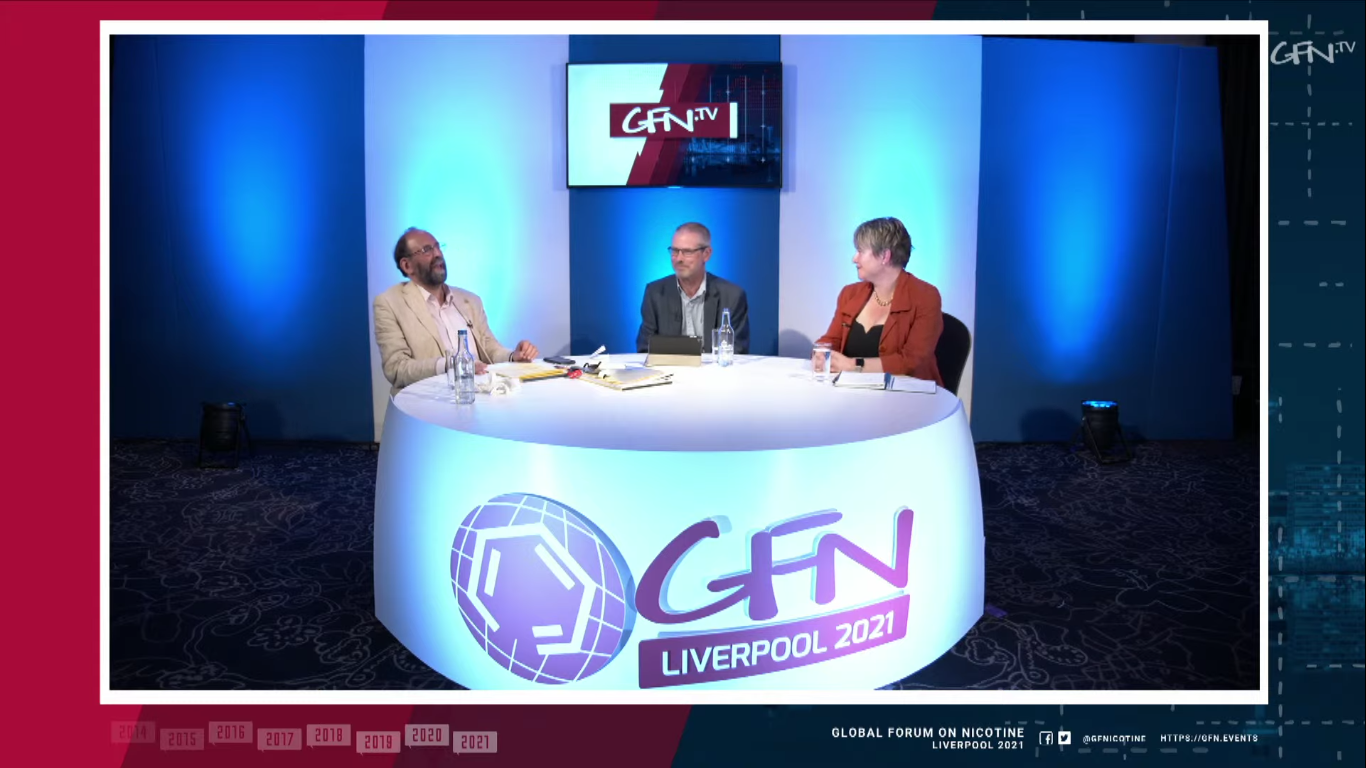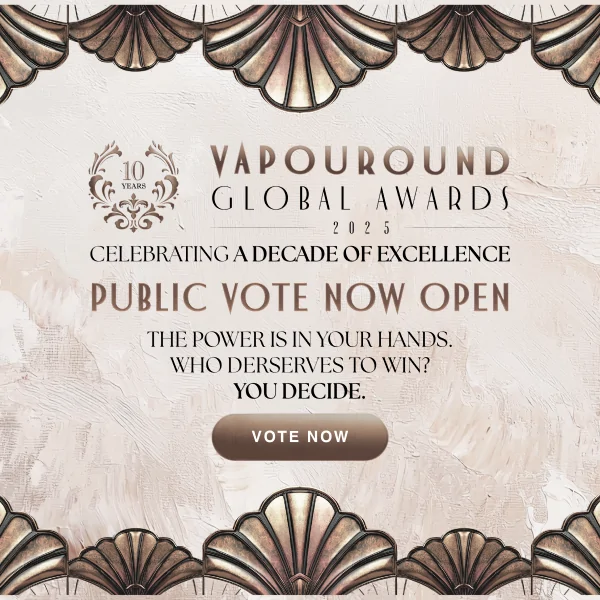This year marks the eighth annual Global Forum on Nicotine, which gathered experts from around the globe to discuss the future of harm reduction.
Here are our highlights from the two-day event.
Science and Politics: an often fractious relationship

The first day of the conference kicked off with Fiona Patten, Australian MP and leader of the Reason Party, speaking about the clash between science and politics around vaping in Australia.
She said:
“If Australia took on a more permissive approach to vaping we would probably save 20,000 lives immediately.
“Somehow, when it comes to the logical facts about vaping, policymakers choose to ignore them and say: ‘make up your own mind’.”
Fiona Patten MP
Patten celebrated the UK’s approach to harm reduction, praising it for including vaping in its campaigns and calling for the Australian Government to follow suit.
She said:
“We need to pump up our lobbying and challenge candidates at elections.
“To all the vapers that vote: we will get there.”
Fiona Patten MP
Science: orthodoxy, challenges and dissent
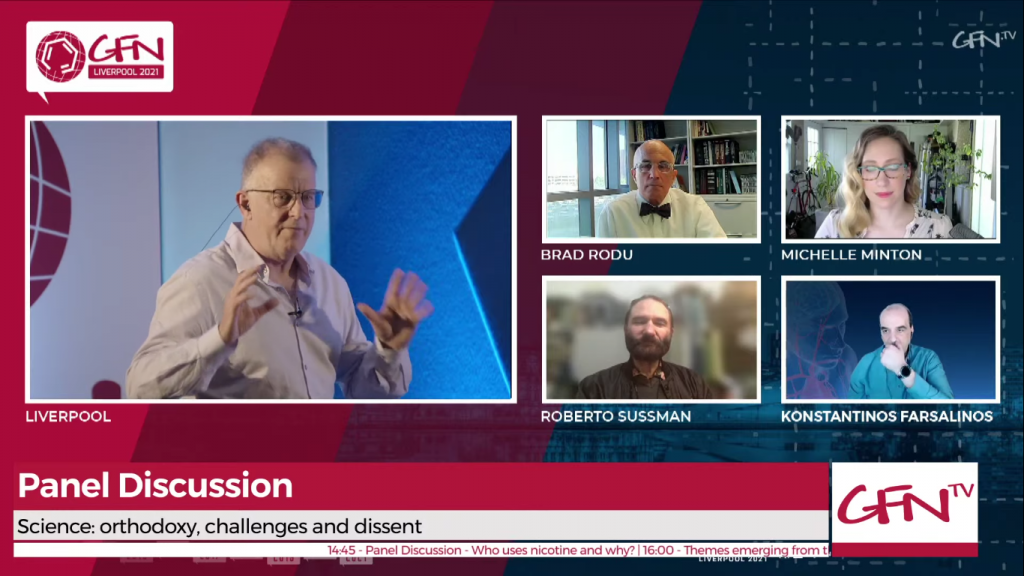
The next event was a discussion panel focusing on how conflicts of interest can result in biased scientific research.
Cardiologist and passionate vape supporter Konstantinos Farsalinos said he felt ‘offended’ by the way the research process has been weaponised against e-cigarettes in the past, arguing:
“It’s becoming a moral and political debate rather than a scientific one.”
Konstantinos Farsalinos
Physicist Roberto Sussman added that much of scientific research has become guided by political objectives and cuts corners to fast-track the process.
Similarly, Brad Rodu denounced much of the research process in the US as a ‘set-up’, comparing research universities to businesses in how they are often driven by funding.
Lifestyle regulations expert Michelle Minton said:
“All over the Judeo-Christian, European-based world is the idea that if something is pleasurable, it must be bad.
“Things like vaping or snus are pleasurable, and people who have a moralistic view of what health is, find that to be unacceptable.”
Michelle Minton
Who uses nicotine and why?
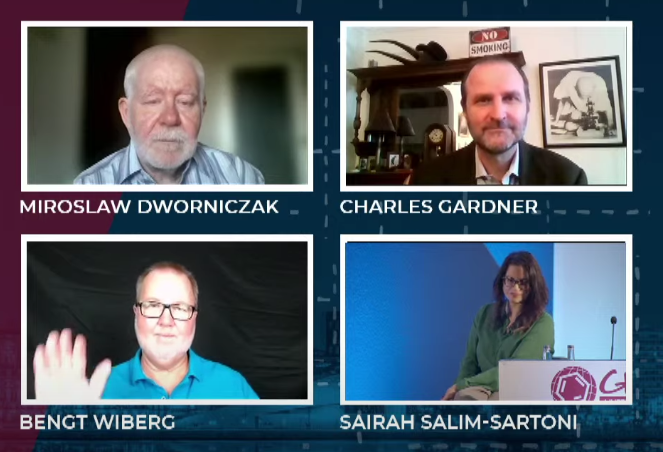
Another panel explored the stigma attached to nicotine dependence.
Charles Gardner, Executive Director of INNCO, explained that many smokers are from marginalised groups and may face further discrimination for using cigarettes.
He said:
“Now the same stigma is being conveyed to people who vape.”
“I think it’s reprehensible and it needs a big rethink.”
Charles Gardner, INNCO
Sairah Salim-Sartoni of JUUL Labs argued that “we have to meet smokers where they are” and provide them with a variety of ways to quit.
She also emphaised the importance of accurate and accessible messaging about THR products.
Polish scientist Miroslaw Dworniczak of the New Nicotine Alliance said:
“I’m so envious, because in the United Kingdom you have PHE and the Royal College of Physicians and their information is loud and clear.
“In Poland, most of the information is that nicotine causes cancer and that it’s evil.”
Miroslaw Dworniczak, NNA
Bengt Wiberg, developer of Sting Free Snus, was also in attendance, and praised Swedish vape shops for effectively being ‘THR pharmacies’.
Investment in Nicotine Innovation: risks and rewards for public health
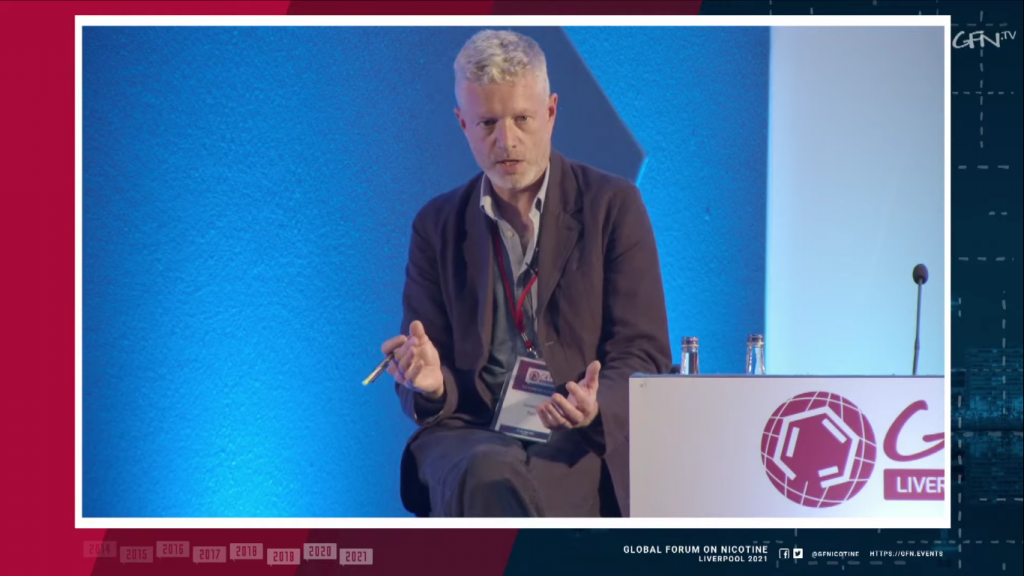
The final talk of the day was on the tobacco industry’s investment in harm reduction products.
Business analyst Jonathan Fell called for an end to hostility towards tobacco companies who are launching their own e-cigarette products, arguing that on the topic of THR, he trusts these firms more than the anti-vaping WHO or EU.
Professor David Sweanor added that the ‘cartoonish caricature’ of Big Tobacco was not useful when looking at policy, and argued the way forward is for countries to stop imposing bans on e-cigarettes.
He said:
“What incentive do you have to try to come up with a less hazardous product when countries like India not only decide to ban the alternatives, but the World Health Organization gives them a reward for doing so?”
David Sweanor
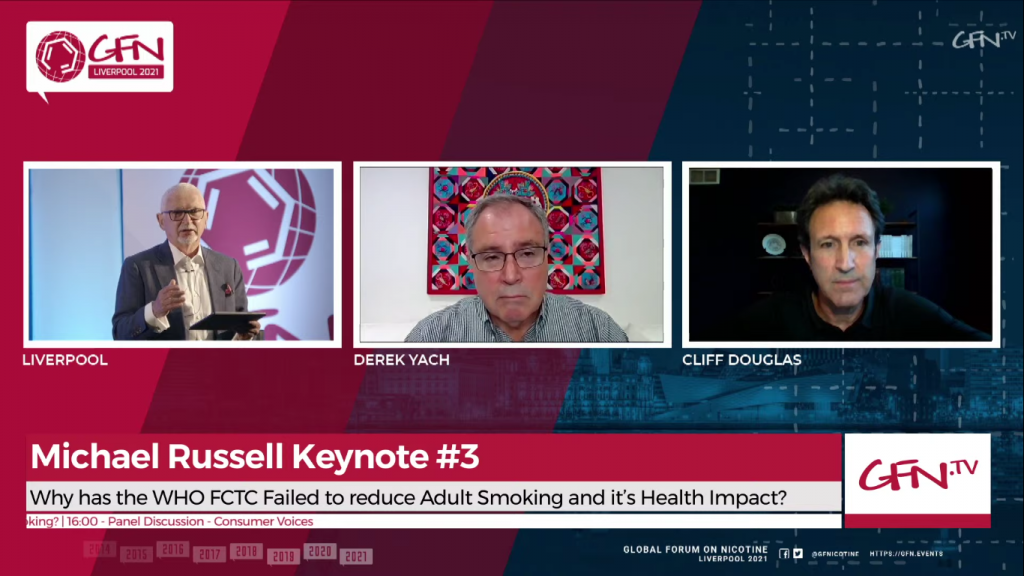
Why has the WHO FCTC failed to reduce adult smoking and its health impact?
The second day commenced with a talk from the Foundation for a Smoke-Free World president Derek Yach on the WHO’s approach to smoking cessation.
Yach criticsed the WHO for ignoring the research on THR products, saying:
“This industry has created tools that have the potential to create one of the most profound public health shifts in history.
“The present technological revolution demands an accompanying ideological revolution.”
Derek Yach, Foundation for a Smoke-Free World
Tobacco control policy expert Cliff Douglas responded to Yach’s talk by calling the WHO’s current stance ‘an exercise in propaganda’ that could cost lives.
He added:
“We must continue to seek genuine common ground wherever possible to end the epidemic caused by combustible tobacco use.”
Cliff Douglas
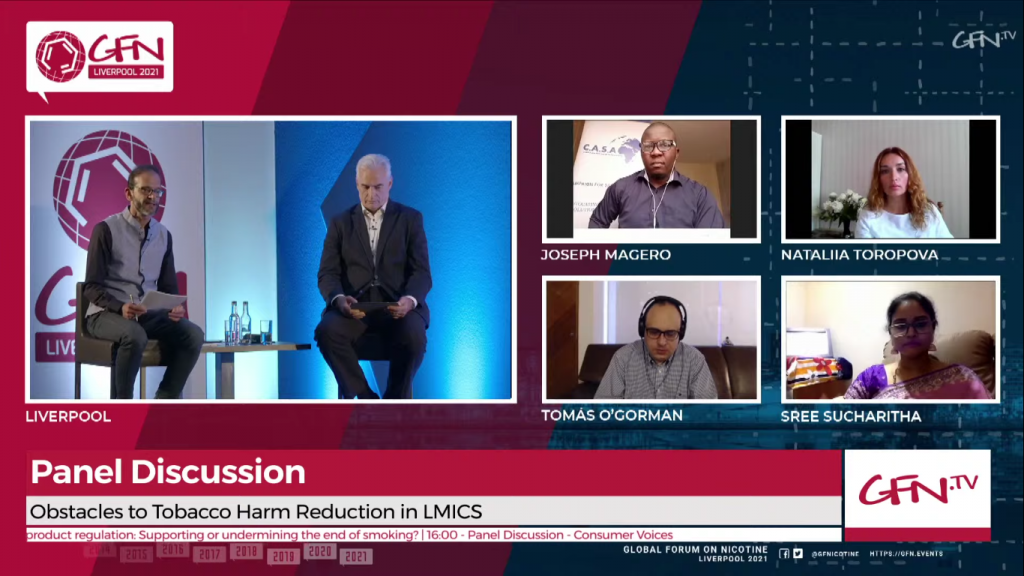
Obstacles to Tobacco Harm Reduction in LMICs
Later, panellists from lower-middle-income countries came together for a discussion on government approach to harm reduction.
Community medicine professor Sree Sucharitha, said:
“The first and foremost barrier for tobacco harm reduction in India is the lack of political will in articulating THR in our national policy and realising its potential in a country with almost 300 million tobacco users”
Sree Sucharitha
Tomás O’Gorman, a vape advocate from Mexico, echoed the sentiment and said the government needs to acknowledge the ‘enormous’ possibilities that THR can offer to tobacco users.
Former WHO tobacco-control coordinator Nataliia Toropova said that the lack of reliable data available to policymakers and the general public in former Soviet Union states was to blame for the spread of misinformation, and said that health officials need to back vaping as a quitting tool.
She said:
“If the doctors are willing to take up this tool and actually tie it to cessation the way it should be, then this is something we should encourage.”
Nataliia Toropova
Joseph Magero of the Campaign for Safer Alternatives said that misinformation was also a major issue in Africa and that research and education was the way forward.
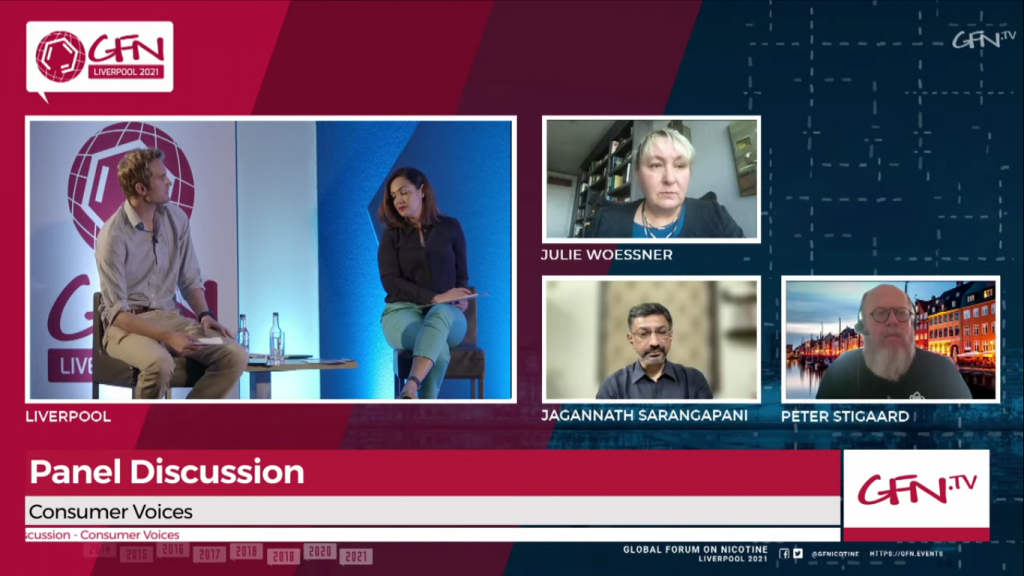
Consumer voices panel
This year’s GFN ended with a ‘consumer voices’ panel, reflecting on issues that had been discussed over the two days.
Jagannath Sarangapani was optimistic about the state of the vape community in India, saying that the ban has slowed down the rate of harm reduction, but not stopped it entirely.
He suggested that vaping has saved lives in India beyond just smokers, saying:
“I have friends who were users of chewing tobacco who have actually found it very convenient to quit with vaping – so that kind of cross-transition does happen.”
Jagannath Sarangapani
Peter Stigaard of the Danish Vapers Association spoke about the upcoming flavour ban in Denmark, expressing his concerns that e-cigarette users may attempt to vape unsafe, illicit products if they cannot access the e-liquids they are used to.
Julie Woessner of INNCO was also present, and said:
“The challenge in the US in particular is that it’s becoming a very politicised issue.
“The good news is that we have a lot of advocates.”
Julie Woessner, INNCO
Recordings of both days of this year’s GFN are available online in full on YouTube.



